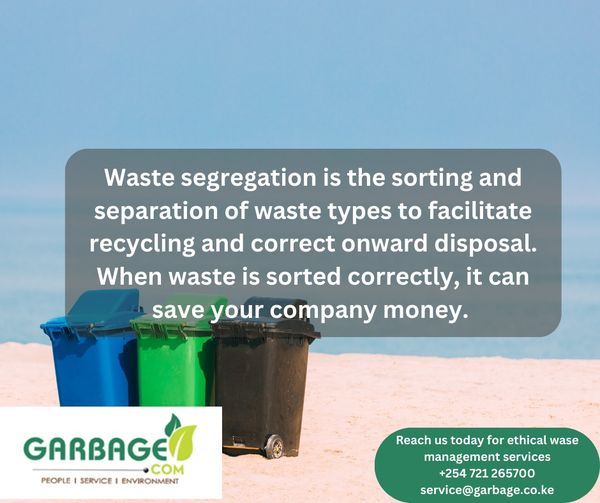Waste Sorting
Home / Waste Sorting
Maximizing Resource Recovery and Environmental Sustainability
Waste sorting, also known as source separation, is the process of separating and categorizing waste materials based on their composition and potential for recycling or proper disposal. The objective of waste sorting is to maximize resource recovery, reduce environmental impact, and promote sustainable waste management practices.
Here are the steps we take in waste sorting:
- Segregation: Waste is initially separated into different categories based on its nature and composition. Common categories include organic waste, paper, plastic, glass, metal, and hazardous materials.
- Collection: After segregation, the different waste streams are collected separately, either by separate collection bins or by waste management personnel.
- Transportation: The collected waste is transported to appropriate facilities for further processing. This can involve taking it to recycling centers, composting facilities, or waste-to-energy plants.
- Processing: At the processing facilities, the waste is further sorted and treated to extract valuable materials or prepare it for proper disposal. Different techniques such as shredding, compacting, or melting may be used depending on the type of waste.
- Recycling: Recoverable materials, such as paper, plastic, glass, and metal, are sent to recycling plants where they are processed and transformed into new products. Recycling helps conserve resources, reduce energy consumption, and minimize the need for raw materials extraction.
- Composting: Organic waste, including food scraps and yard trimmings, can be composted. Composting is a natural process where organic matter decomposes, producing nutrient-rich soil called compost. It can be used as fertilizer in gardening and agriculture.
- Waste-to-energy: Some waste that cannot be recycled or composted may be used as a fuel source in waste-to-energy facilities. Through controlled incineration or other conversion methods, the waste is burned to produce heat or electricity, reducing the amount of waste going to landfills and generating renewable energy.
- Landfill disposal: Waste that cannot be recycled, composted, or converted into energy is disposed of in landfills. Properly engineered landfills are designed to minimize environmental impact and prevent contamination of soil and water.

Request a free quote for our expert waste sorting services and experience a well-organized and eco friendly waste management.
Book Service
Book your waste sorting services.
